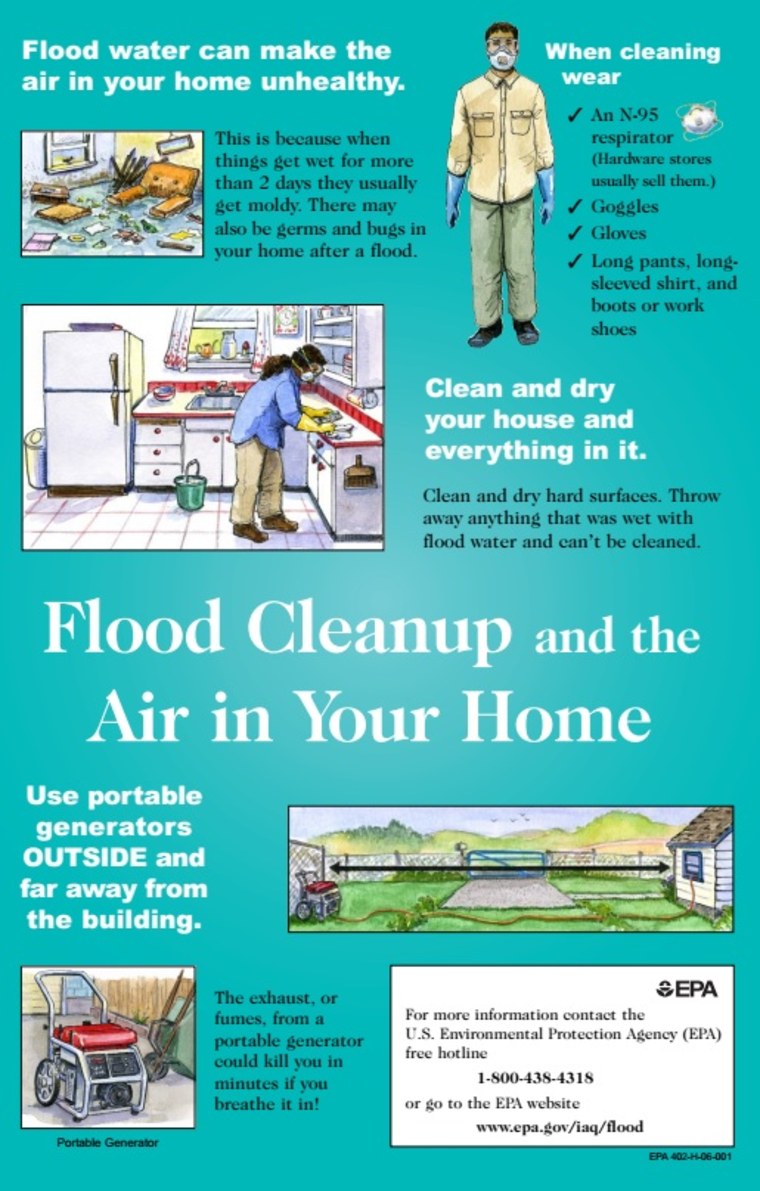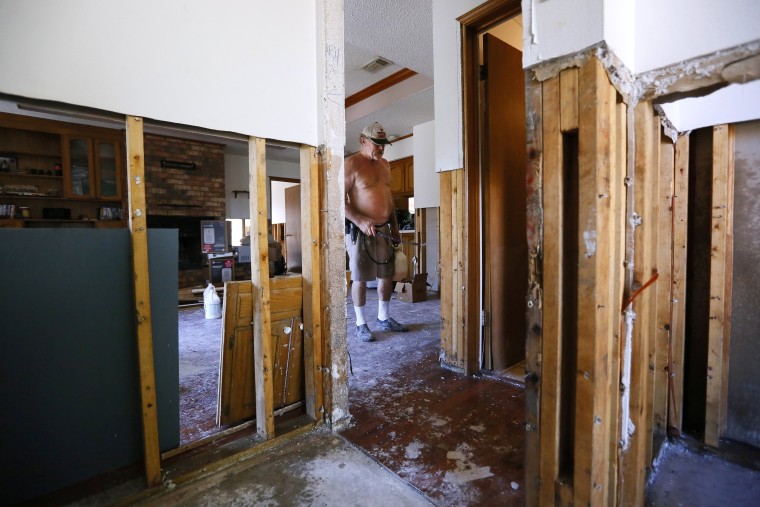Even for Louisianans whose homes remained intact after this month's devastating floods, a second, invisible menace still threatens to wipe out many residences: mold, which can overwhelm a home and leave gutting it as the only recourse.
As many as 11 people were killed when unrelenting rain flooded the state beginning Aug. 13. Gov. John Bel Edwards called the disaster a "historic, unprecedented flooding event" after the storm system dropped three times as much rain on Louisiana as Hurricane Katrina, according to National Weather Service records.
And many more than the 60,000 residents already left homeless could lose their homes, too.
"Mold removal is a top priority," the state Health Department warned in the days following the floods.
Mold in your home isn't like the mold that grows on old bread. This mold can cause severe allergic reactions and potentially fatal respiratory seizures, according to the federal Centers for Disease Control and Prevention — and it begins growing in only 24 hours.
Related: Floodwaters Breed Hidden Health Dangers
But removing mold is very hard to do.

Doctors, along with state and federal authorities, say mold removal is best done by licensed contractors, because the danger to homeowners is severe.
If you get a single cut or a scrape, "the potential of being exposed to something that could get you really sick" — like tetanus — is just too high, said Bridget Redlich, an infection prevention specialist at Lake Charles Memorial Hospital.
At a minimum, Redlich told NBC station KPLC of Lake Charles, don't even think about doing the work yourself without a head-to-toe covering of rubber boots, a mask, rubber gloves and certified protective eyewear. That's stifling gear for work that must be done in summer heat with the air conditioning off, because it can disperse mold throughout a home.
The best course for many whose homes may still be structurally sound is to rip everything out anyway and start all over. That's because the list of stuff that probably has to go begins with foundational materials like Sheetrock, insulation, plaster, paneling, ceiling tiles, carpet and padding, state Health Secretary Rebekah McGee said.
And so, across the state, huge piles of debris — the guts of once-habitable homes — line the streets.
"We'll have to replace all this," Keunta Welch said of the collection of materials outside the family home in Baton Rouge.
"You can see the mold," Welch told NBC station KTAL of Shreveport. "The water was coming through the base and the door."
Kyung Kim pointed Friday at a pile of debris almost 20 feet long outside her home in Lafayette — flooring and wood that had to be ripped out because of the mold hazard.
"I had no idea you had to do all that," Kim told NBC Philadelphia, which is following a group of Red Cross- and church-based volunteers who rushed to Louisiana to lend a hand.
The Federal Emergency Management Agency said the flooding ravaged even areas that aren't considered flood zones — so many wiped-out homeowners, like Kim and Welch, didn't have flood insurance.

That makes the prospect of rebuilding a difficult one.
"It's a lot of money to come out of pocket," Welch said.
And the situation is made worse by slimy scammers who go around the state trying to persuade homeowners that they can easily go back home — if they just pay for their help.
"Fly-by-night contractors often go door to door after natural disasters, offering to help victims clear debris, remove mold or repair homes," state Attorney General Buddy Caldwell said.
Caldwell's office has begun circulating flyers warning stunned homeowners to be particularly wary of anyone offering to help them move back in by procuring "mold remediation certificates" proving that their homes are safe.
Some scammers are charging residents as much as $1,000 to provide the "certificates" — which the state doesn't even require, Caldwell's office said.
Instead, his office advised that homeowners needing help look only at approved mold-removal contractors:
- Get at least three bids on identical itemized work orders.
- Demand proof of insurance and call the contractors' insurers to confirm coverage.
- Check that the contractors are licensed through the State Licensing Board.
- Don't cave in and agree to a large down payment, which a reputable contractor won't demand.
- Get guarantees and contracts in writing, and don't agree to pay cash.
The state Health Department is providing full mold recovery guidance in English (pdf), Creole (pdf), Spanish (pdf) and Vietnamese (pdf).
